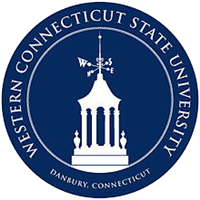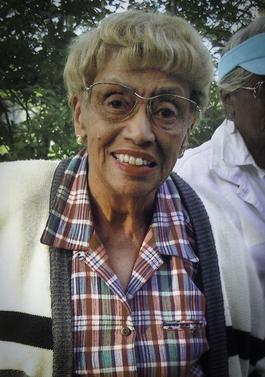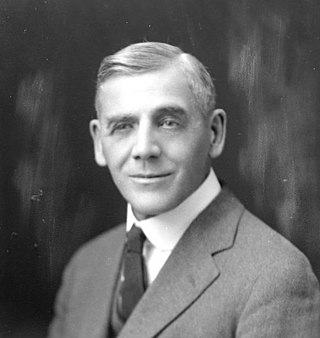
Western Connecticut State University is a public university in Danbury, Connecticut. It was founded in 1903 as a teacher's college and is part of the Connecticut State University System.

The University of Connecticut (UConn) is a public land-grant research university system with its main campus in Storrs, Connecticut. It was founded in 1881 as the Storrs Agricultural School, named after two benefactors. In 1893, the school became a public land grant college, taking the name University of Connecticut in 1939. Over the following decade, social work, nursing, and graduate programs were established. During the 1960s, UConn Health was established for new medical and dental schools. UConn is accredited by the New England Commission of Higher Education.

Connecticut College (Conn) is a private liberal arts college in New London, Connecticut. Originally chartered as Thames College, it was founded in 1911 as the state's only women's college, a response to Wesleyan University having closed its doors to female students in 1909. The college became coeducational in 1969, adopting its current name.

Sacred Heart University (SHU) is a private, Roman Catholic university in Fairfield, Connecticut. It was founded in 1963 by Walter W. Curtis, Bishop of the Diocese of Bridgeport, Connecticut. Sacred Heart was the first Catholic university in the United States to be staffed by the laity.

The University of Hartford (UHart) is a private university in West Hartford, Connecticut. Its 350-acre (1.4 km2) main campus extends into neighboring Hartford and Bloomfield. The university is accredited by the New England Commission of Higher Education.

Trinity College is a private liberal arts college in Hartford, Connecticut, United States. Founded as Washington College in 1823, it is the second-oldest college in the state of Connecticut. Coeducational since 1969, the college enrolls 2,235 students. Trinity offers 41 majors and 28 interdisciplinary minors. The college is a member of the New England Small College Athletic Conference (NESCAC).

Prudence Crandall was an American schoolteacher and activist. She ran the Canterbury Female Boarding School in Canterbury, Connecticut, which became the first school for black girls in the United States.
The Daily Campus, founded in 1896, is a student-run newspaper at the University of Connecticut. The Daily Campus has a circulation of 1,500 on weekdays during school term. Since its creation, the newspaper has undergone several name changes, having started as The Storrs Agricultural College Lookout, a monthly, when it published its first issue on May 11, 1896. The name was changed to The Connecticut Campus in 1915, followed by The Connecticut Daily Campus, and then finally The Daily Campus in 1984. It began publishing five days a week during the academic year in 1952 and became a morning paper in 1955.
Annhurst College was a private American Catholic college in South Woodstock, Connecticut, which operated from 1941 to 1980. The school was founded and administered by the Daughters of the Holy Spirit, a religious congregation of women founded in France in 1706, who are primarily dedicated to education. The college's curriculum was career-focused.

Woodstock Academy (WA), founded in 1801, is a high school located in Woodstock, Connecticut, United States. The Academy, which describes itself as an independent school, serves residents from the Connecticut towns of Brooklyn, Canterbury, Eastford, Pomfret, Union, and Woodstock. The respective towns' taxpayers pay student tuition through municipal taxes, and therefore state agencies and the National Center for Education Statistics (NCES) categorize Woodstock as a public school. The school also accepts tuition-paying students from surrounding towns and states as day students, and students from around the country and the world as residential students.

Morrone Stadium, officially known as Ray Reid Field at Joseph J. Morrone Stadium is the on-campus soccer stadium at University of Connecticut in Storrs, Connecticut.
Central Connecticut State University's annual undergraduate commencement exercises are held on campus each May. From 1989 to 2016, separate graduation ceremonies were held for recipients of postgraduate degrees. Additional midyear undergraduate commencements were held at the end of the fall terms from 1988 to 1993 and at several other points in the university's history, most recently in 2022.

Jewel Plummer Cobb was an American biologist, cancer researcher, professor, dean, and academic administrator. She contributed to the field of cancer research by studying the cure for melanoma. Cobb was an advocate for increasing the representation of women and students of color in universities, and she created programs to support students interested in pursuing graduate school.
Jean-Léon Destiné was a Haitian-born American dancer and choreographer. He was born in Saint-Marc and moved to the United States with the dance company of Lina Mathon-Blanchet in the early 1940s. He later studied at Howard University. His work, becoming well known in the 1940s, often addressed Haiti's history of resisting colonialism and slavery. He also danced with Katherine Dunham's company and founded a national dance company in Haiti in the late 1940s. Destiné is known as the father of Haitian professional dance.

Mary Taylor Reeves Foulke Morrisson was an American suffragist and social activist. She was a pioneer in the Women's rights movement and was a prominent member of the Board of Trustees at Connecticut College for 28 years. Morrisson graduated from Bryn Mawr College in 1899, where she studied chemistry, biology, and government. In 1900, she married James William Morrisson, president of Fuller-Morrisson Co., wholesale druggists.
The Institute of Women's Professional Relations was a center that aimed to collect and disperse a wide array of information about employment opportunities for women in professional fields.

Rosemary Park was an American scholar, academic leader, advocate for women's education and the first American woman to become president of two colleges and vice chancellor of a major university. During her career Park served as the 5th president of Connecticut College from 1947 to 1962, the 6th president of Barnard College from 1962 to 1967 and the first female vice chancellor in the University of California system at UCLA from 1967 to 1970.
The 1972 Holy Cross Crusaders football team was an American football team that represented the College of the Holy Cross during the 1972 NCAA University Division football season. Ed Doherty returned for his second year as head coach. The team compiled a record of 5–4–1.

Albert Nels Jorgensen was an American academic administrator who served as the seventh president of the University of Connecticut (1935–1962). Its longest-serving president and its youngest at age 36 at the time of his appointment, Jorgensen led UConn's transformation from a sleepy agricultural college to a major modern university. UConn came into existence by renaming Connecticut State College in 1939. Student enrollment rose from 844 in 1935 to 11,877 in 1962—an increase of over 1,400%. Opened in 1955, the Jorgensen Center for the Performing Arts on the university's Storrs campus was named in Jorgensen's honor. The Harriet Jorgensen Theatre is named after his wife.

Charles Lewis Beach was an American agricultural educator who served as the 4th president of Connecticut Agricultural College, now the University of Connecticut, from 1908 to 1928. Beach played a pivotal role in UConn's development. He also laid the foundations for the future William Benton Museum of Art. Beach is one of only five presidents to hold the honorary title of President Emeritus.














